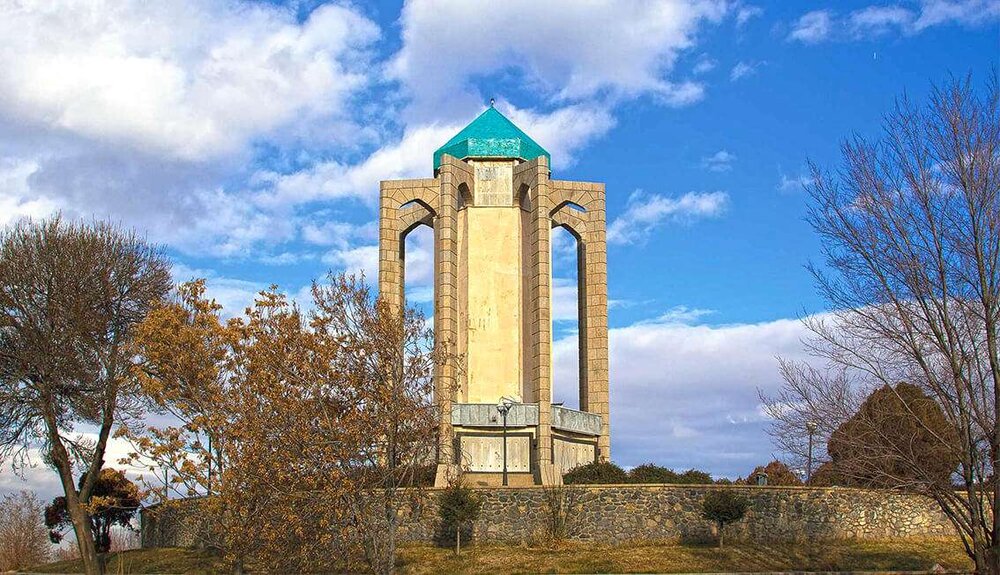Iran wants UNESCO registration for Hamedan

TEHRAN – Iran will put forward the cultural landscape of Hamedan which embraces the archaeological site of Ecbatana and many other Achaemenid sites as a candidate for inclusion in the UNESCO World Heritage list.
On Tuesday, the deputy tourism minister Ali Darabi said that his ministry developing an all-inclusive dossier for Hamedan and its cultural landscape to be submitted to the UN body in 1401, the next Iranian calendar year beginning on March 21.
He made the remarks in a meeting with Hamedan’s governor-general Alireza Qasemi-Farzad, adding: “UNESCO registration of Hamedan’s cultural landscape is on agenda…”
Known in classical times as Ecbatana, Hamedan was once one of the world’s greatest cities of ancient times. Pitifully little remains from antiquity, but significant parts of the city center are given over to excavations, and there’s a scattering of historical curiosities.
“Hamedan has a special stance among the World Heritage sites of the country because it embraces a rich history from ancient to contemporary times…” Darabi said.
Sprawling on a high plain, mountainous Hamedan is somehow chockfull of travel destinations for various tastes.
The archaeological site of Hegmataneh, which corresponds with the ancient city of Ecbatana, has a circumference of 1.4 kilometers with an area of about 40 hectares. Ecbatana was, in fact, a city on the site of which stands the modern city of Hamedan. The view of distant mountains from the archaeological hill is pleasantly rewarding, especially in the late afternoon, however, what lies below is an ancient Median and Achaemenid city. Small sections have been excavated over the last century, most extensively in the 1990s. There’s a smart museum nearby, as well as two Armenian churches, now part of Hamadan University.
It is worth mentioning that Ecbatana was first excavated in 1913 by the French Assyriologist Charles Fossey. Excavations have been limited due to the modern town covering most of the ancient sites. In 2006, excavations in a limited area of Hagmataneh Hill failed to discover anything older than the Parthian period (247 BC – 224 CE), but this does not rule out older archaeological layers existing elsewhere within the vast site.
Moreover, for history buffs and culture lovers, Ganjnameh is a can’t-miss destination while in Hamedan. Meaning “Treasure Epistle”, Ganjnameh features sets of cuneiform inscriptions written in three languages of ancient Persian, Elamite, and Babylonian. Dating back to the age of Achaemenid Kings Darius I (521-485 BC) and Xerxes I (485-65 BC), the inscriptions were first studied in detail by the French painter and archaeologist Eugene Flandin, who was accompanied by Pascal Coste.
The right inscription, belonging to Xerxes I, reads: “The Great God [is] Ahuramazda, greatest of all the gods, who created the earth and the sky and the people; who made Xerxes king, and outstanding king as an outstanding ruler among innumerable rulers; I [am] the great king Xerxes, king of kings, king of lands with numerous inhabitants, king of this vast kingdom with far-away territories, son of the Achaemenid monarch Darius.”
In addition, the 12th-century Gonbad-e Alavian (“Alavian Dome”) is another cultural element of Hamadan. It is a prime example of the Persian-Islamic architecture of the time. Its brick tower remains famous for the whirling floral stucco added in the Ilkhanid Mongol era; this ornamentation is described by British travel writer Robert Byron in his travelogue “The Road to Oxiana”.
Furthermore, Masjed-e Jameh (The Friday Mosque of Hamedan) is one of the oldest in Hamedan. The mosque is rectangular, and formerly had four porches of which three have remained. This structure comprises two areas for nocturnal prayers, a brick dome, and a large and pleasant courtyard with a huge pool in the center.
The iconic Bu-Ali Sina (Avicenna) Mausoleum dominates his namesake square and resembles a concrete crayon pointing to the heavens. It was loosely modeled on Qabus’ 1000-year-old tower in Gonbad-e Kavus, which is a UNESCO World Heritage.
Also, some 70 km northwest of Hamedan, is situated the entrance to the amazing Ali Sadr Cave, a gigantic water-filled cavern wieldy believed to date from the Jurassic era. The cave embraces a huge matrix of sunless channels, ponds, grottoes, and water passages which are stretched along with imposing rock formations and stalactite-covered tops in a span of several kilometers.
Hamedan is graciously cool in August but snow-prone and freezing from December to March. In summer the air is often hazy, but on a rare, clear spring day there are impressive glimpses of snow-capped Alvand Kuh (3580m), sitting aloof above the ragged neocolonial cupolas of Imam Khomeini Sq.
AFM
Leave a Comment